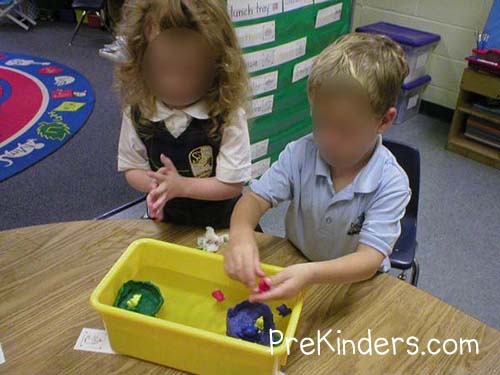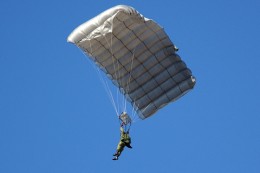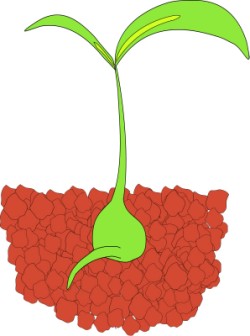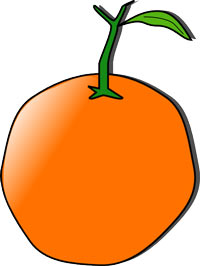Ms. Wilke's Wonderful World of Scicence
Tuesday, May 6, 2014
Monday, May 5, 2014
Amazing Websites!
The Lorax Project
This site raises awareness of environmental issues and helps children to take action to conserve forests and species.
KidsHealth
KidsHealth has trainloads of accurate, up-to-date information about growth, food & fitness, childhood infections, immunizations, lab tests, medical and surgical conditions, and the latest treatments. You’ll find health games, How The Body Works animations, the KidsVote health poll, and tons of surprises.
Catch the Science Bug
Solve science puzzles, do your own scientific investigations, or learn more about what scientists do on the job.
Climate Kids
Climate Kids offers kids clear answers to questions on global climate change through sections on weather, air, the ocean, fresh water, carbon, energy, plants and animals and technology. Includes educational games, activities, crafts, videos and information on green careers.
Kids Astronomy
Powerful and fun resource for kids, exploring astronomy and other space related topics. Play games, learn through interactive applications, and much more.
Kids Science Challenge
Heres your chance to have a real scientist help you with your science project. Submit your idea and the scientists may choose it to study! And even if yours isnt chosen, you can still find lots of fun science activities on this site.
San Diego Zoo - Kids
Explore the animals of the San Diego Zoo. Learn facts, see up-close images, play games, and interact.
Walking with Dinosaurs
Created by the BBC, Walking with Dinosaurs features individual pages featuring interesting facts, images and statistics on particular dinosaurs.
Energy Kids
Learn about energy and try some fun games and activities. Discover what energy is, where it comes from, how to use and save energy, and more! Also includes fabulous content for teachers and classrooms.
Magic Porthole
Magic Porthole takes you into the fascinating and fragile world of coral reefs and the vast oceans. Enjoy playing games as you make discoveries about the lives of frogfish, cleaning gobies, turtles, seahorses, and dolphins. Deepen your knowledge with exciting videos, games, and many resources from aquariums, museums, NOAA, and the Wild Dolphin Project, among others.
Monday, April 28, 2014
Recomended Texts
Where Once There Was a Wood by Denise Fleming
This text is excellent for teaching children to appreciate nature and all it has to offer. The rhythmic verse accompanied by the beautiful paper mache illustrations will capture children's attention and draw their interest into the wonders of nature. In addition the back of the text offers factual information regarding the needs of wildlife and easily executed suggestions for encouraging wildlife around the home. The information is just right for family and classroom sharing and would be perfect conversation starter for Earth Day discussions.
The Honey Makers by Gail Gibbons
The Honey Makers is a beautifully illustrated informational book about a look into a bee hive. This text includes labeled illustrations and diagrams of different types of honey bees and steps throughout the process of making honey. This book presents accurate information that is easy to follow along with and to revisit to use to gather facts. The bright, vivid illustrations are appealing to the reader and accurately depict the life of a honey bee. I would use this book in the classroom as a resource in a lesson about bees or making honey. This book would be a great addition to a classroom library. Students could refer to this book while doing research on honey bees or insects.
Wings of Light: The Migration of the Yellow Butterfly by Stephen R. Swinburne
This is a beautiful book about the migration of the cloudless sulfur yellow-winged butterfly as it migrates from the rainforest floor in the Yucatan Peninsula. This book follows the butterfly through his entire life journey with breathtaking, detailed descriptions from finding a mate, to his subsequent death allowing readers to experience the full effect of the yellow butterfly life cycle.
From Seed to Sunflower by Gerald Legg
This would be a great book to teach students a science lessons about plants growth. IT teaches students the growth and change of a sunflower from seed to flower and from flower to seed. It has colorful and clear illustrations, sunflower facts, and a list of sunflower words. It would be an excellent book to teach kids new science vocabulary.
Arctic Nights, Arctic Lights by Debbie S. Miller
This book speaks of the fascinating days and nights near the arctic circle in Alaska. This book describes the wildlife and what's going on with sun, clouds, light and darkness. It is fabulous that on the top of every page you can read the date, season, and the amount of hours and minutes there are for that day. The author also does a great job of showing how the wildlife copes with the temperature changes and the illustrations are wonderful. In the back of the book there is a glossary to help with vocabulary.This text would be a great addition to a unit on weather or wildlife.
Saving Yasha: The Incredible True Story of an Adopted Moon Bear by Lia Kvatum
Saving Yasha is the story of a Moon Bear, called Yasha, whose mother is killed by poachers. Scientists Liya Pokrovskaya and Sergey Kolchin rescued Yasha from the poachers along with two other cubs, Shum and Shiksha. Moon Bears are an endangered species, so it was very important that these cubs grow up have their own cubs. Liya and Sergey raised these cubs and taught them how to live in the wild. Liya and Sergey also studied the Moon Bear cubs, to better understand how to save the species. Along with this touching story, readers are treated to delightful full-color photographs of the bear cubs playing, climbing, exploring, and generally being rolly-polly balls of joy. Includes maps, fact list, and additional resources. This book serves as a good discussion tool for wildlife rehabilitation and bears in general.
Living Sunlight: How Plants Bring The Earth To Life by Molly Bang
Told from the perspective of the sun, Molly Bang and Penn Chisholm describe the role of plants on earth. They tell about photosynthesis, explain how carbon dioxide and oxygen are important to plants and animals, and describe how living things get energy. The illustrations are vibrant, interesting, and a wonderful compliment to the story. A very thorough but complete overview of the role of plants on earth.
Fall Walk by Virginia Brimhall Snow
This
beautiful picture book will make learning about leaves easy. Children
and an adult go on a fall walk and learn to identify trees by the shapes
and colors of their leaves. The artwork sets this book apart from
other similarly-themed books.
This
is a great book for the start of Fall. The illustrations are very
detailed. This makes as a great read aloud as well as class activity.
The book provides a matching page for leaves to trees, instructions on
pressing leaves, leaf rubbing, and tree trivia.
Lost in the Woods by Carl R. SamssII and Jean Stoick
This is a beautiful story, both visually and in content, about a newborn fawn "lost" in the woods. The book is told through a series of "dreamlike" photographs in nature. It is through the personification of the forest animals that we learn of "Spots" and his dilemma. It is a winner of 8 National and International Awards. The story is told in verse that includes descriptive words of things found in nature. Although it is a fantasy we also learn facts about the raising of fawns and how their mothers protect them from "trouble's nose". This would be a book I would keep in my science center and or in my classroom library.
The Elephant Scientist (Scientists in the Field) by Caitlin O'Connell and Donna M. Jackson
Elephant scientist Caitlyn O’Connell provides exquisite detail of this majestic creature studying them in the wild at two national parks in Namibia along the coast of southwest Africa. O' Connell's care and concern for the elephants she studies earned her the nickname "Mother of All Elephants" by the indigenous people and the photographs taken by her and Timothy Rodwell really showcase the personality that the elephants can have.
Thursday, February 13, 2014
Science Lessons
Make a Boat Experiment
This activity is perfect for not only pre-kindergartners, but all elementary level students experimenting with sink and float. For this activity, children may work individually, in partners, or even in small groups or "teams" to create a boat out of clay or aluminum foil. Students must use trial and error to create a boat that will float. Once their boat is able to float, children will add plastic counters to the boat to see how many pieces the boat can hold before sinking. This activity really engages children's cognitive thinking and gets them fully engaged in science. This experiment is a nice introduction to the concept of sinking and floating for younger children, but can also be extended with in depth discussion for older students.
How Does a Penguin Stay Warm?
This is a great experiment to introduce children in kindergarten to the scientific method. Students can explore the question how does a penguin stay warm in arctic waters to form a hypothesis, draw conclusions, and analyze data. Students will test their hypothesis by placing their hands in ice water first without and then with their hand inside a bag that simulates blubber.
Spinning Science: Disappearing Color!
Did you ever think you could make colors disappear right before your eyes? In this first grade lesson, students will learn that light plays a big factor in how we view objects, especially color. First graders will watch the colors vanish as they overlap and turn to white in this spinning science activity.
Yeast Balloon Science!
This first grade physical science lesson is sure to impress curious students. Tell your children that you are going to blow up a balloon without using your mouth. They may look at you like you're full of baloney, but proving them wrong will be half the fun. This isn't just a cool trick, it's also a great intro to chemistry and biology.
Do-It-Yourself Earthquake
Earthquakes are fascinating, but no one wants to get caught in one! Luckily, it's easy to learn about earthquakes without experiencing one firsthand. In this simple Earth science experiment, fourth graders will observe the effect of lateral earthquake motion on a high-rise building from the safety of your classroom. Your students will delight in shaking the slinky "building" back and forth to simulate the motion of an earthquake. At the end of the experiment, they'll learn about new construction techniques that help skyscrapers resist the destructive power of this type of movement.
Set Up a Solar System of Kids
Abstract science concepts, such as vast distances, are often difficult for children to grasp. Use this kinesthetic learning activity to help your fourth graders envision the solar system and its immense size by creating a small scale map of the solar system—using human planets!
Protecting Our Planet
In this lesson students will describe the environmental impact of humans, understand that pollution is harmful to all living things, and give examples of ways we can reduce, reuse, and recycle waste. To achieve these objectives students will engage in a hands-on activity using pasta to represent waste and pollution. This lesson can be adapted for grades k-5.
Design and Test a Parachute
Learn about air resistance while making an awesome parachute! Design one that can fall slowly to the ground before putting it to the test, making modifications as you go. This would be a great experiment to do with third or fourth grade.
Plant Seeds & Watch Them Grow
Learn about seed germination with this fun science experiment for kids in grades pre-k through 1. Plant some seeds and follow the growth of the seedlings as they sprout from the soil while making sure to take proper care of them with just the right amount of light, heat and water. Have fun growing plants with this cool science project for children.
Does an Orange Float or Sink?
Does an orange float or sink when placed in water? Seems like a fairly straight forward question, but is it? Give this fun density science experiment for kids a try and answer the question while learning a unique characteristic of oranges. This activity may be adapted for grades K through 4.
Subscribe to:
Posts (Atom)


 I
I


































